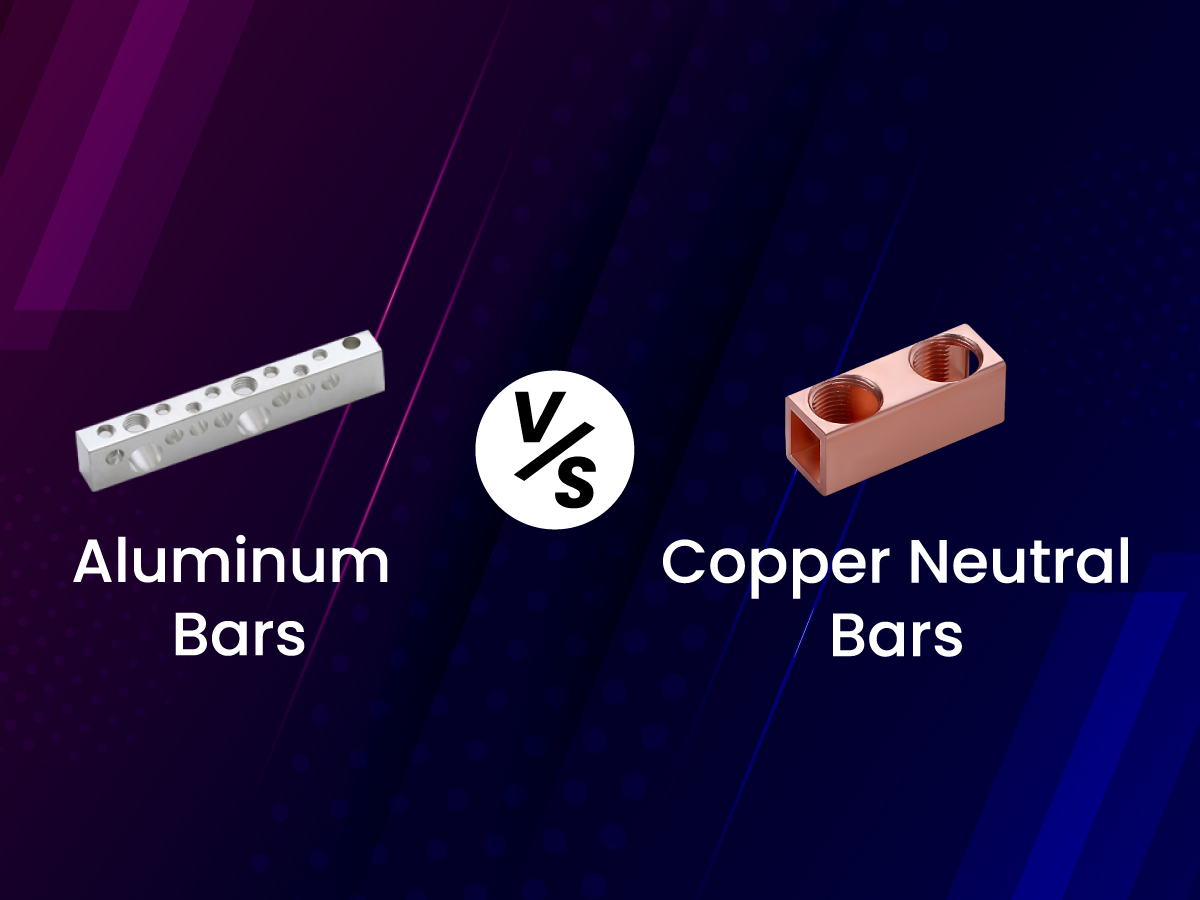Aluminum vs. Copper Neutral Bars: Key Differences, Performance, and Cost Considerations

When designing or upgrading electrical panels, selecting the right neutral bar is a key decision that impacts both safety and performance. Neutral bars function as vital grounding and bonding components within any electrical distribution system. At Teron Metal Components, we recognize the importance of dependable, high-quality connections. That’s why we offer a diverse range of aluminum and copper neutral bars, engineered to meet the demands of modern residential, commercial, and industrial installations.
Material Overview
- Copper: Copper is renowned for its exceptional electrical and thermal conductivity, making it a top choice in compact or high-performance systems. Its inherent corrosion resistance and mechanical strength have made it the industry standard for decades.
- Aluminum: Aluminum is a lightweight, economical alternative to copper. While it has a lower conductivity, its performance can be optimized by increasing the cross-sectional area. It’s particularly useful in large-scale or weight-sensitive installations.
Material Properties
- Conductivity and Temperature Rise
- Copper delivers superior conductivity, meaning less surface area is required for the same current carrying capacity. It generally results in a lower temperature rise.
- Aluminum conducts at approximately 56% of copper’s conductivity, requiring larger dimensions to maintain acceptable temperature rise. This is often achieved by increasing width (by ~27%) or thickness (by ~50%).
- Weight and Mechanical Handling
- Copper is dense and heavy, which can complicate handling, shipping, and installation – especially in large-scale or overhead applications.
- Aluminum is about 50% lighter, making it easier to transport and install. This is especially valuable in modular systems or constrained environments.
- Fabrication and Customization Flexibility
- Both materials can be machined, plated, insulated, and customized to meet the requirements of various electrical applications. Aluminum’s softer texture requires different machining parameters and more care during fabrication, but both materials support:
- Laminated bus designs
- Epoxy insulation
- Multilayer and backplane configurations
- Plating (tin, silver, nickel)
- Both materials can be machined, plated, insulated, and customized to meet the requirements of various electrical applications. Aluminum’s softer texture requires different machining parameters and more care during fabrication, but both materials support:
- Environmental Resistance and Plating
- Aluminum expands approximately 42% more than copper under the same thermal conditions. This can cause joint loosening over time without proper installation torque and fastener selection. Copper is more dimensionally stable under load.
- Cost and Lead Time Considerations
- Copper prices are generally higher and more volatile, affecting both raw material and total system costs.
- Aluminum is more affordable and widely available, often leading to shorter procurement lead times – especially valuable in high-volume or budget-constrained projects.
Use Cases and Applications
- Aluminum Neutral Bars – Ideal Applications
- Residential and light commercial electrical panels – Provide a cost-effective solution for standard installations.
- Utility-scale solar and wind installations – Ideal for large, lightweight, and budget-friendly systems.
- Applications where weight reduction is necessary – Simplify transport and installation.
- Systems with generous enclosure space – Allow for larger dimensions without space constraints.
Find more information about Aluminum Neutral Bars.
- Copper Neutral Bars – Ideal Applications
- Data centers and critical power systems – Ensure high reliability and minimal power loss.
- Marine and offshore environments – Offer strong corrosion resistance in harsh conditions.
- High-density switchgear and control panels – Support compact layouts with high conductivity.
- Equipment requiring minimal voltage drop – Maintain performance with minimal electrical loss.
Find more information about different types of terminal bars.
Unique Strength of Aluminum Neutral Bars and Copper Neutral Bars
- Aluminum Neutral Bars
- Cost-Effective Solution
- Lightweight & Easy to Install
- Corrosion-Resistant Coating
- Reliable Performance
- Copper Neutral Bars
- Long-Term Durability
- High-Load Applications
- Premium Quality
Benefits & limitations
| Property | Copper | Aluminum |
|---|---|---|
| Electrical Conductivity | Excellent (baseline 100%) | Moderate (~56% of copper) |
| Thermal Expansion | Low | High (~42% more than copper) |
| Weight | Heavy | Light (50% less) |
| Cost | High | Economical |
| Corrosion Resistance | High (especially with plating) | Moderate (requires protection) |
| Surface Treatment Options | Tin, silver, nickel plating | Tin, silver, epoxy, dielectric coatings |
| Joint Stability | Very good | Requires proper torque and hardware |
| Size Efficiency | Compact | Requires larger dimensions |
Conclusion
Selecting between aluminum and copper neutral bars ultimately depends on your application’s priorities – whether it’s cost-efficiency, weight reduction, or maximum electrical performance. Both materials offer reliable, safe, and high-quality service when engineered and installed correctly. For tailored recommendations, technical support, or custom fabrication, Get a quick quote. Reach out sales@teronmetalcomponents.com to find the ideal solution for your residential, commercial, or industrial power distribution needs.
